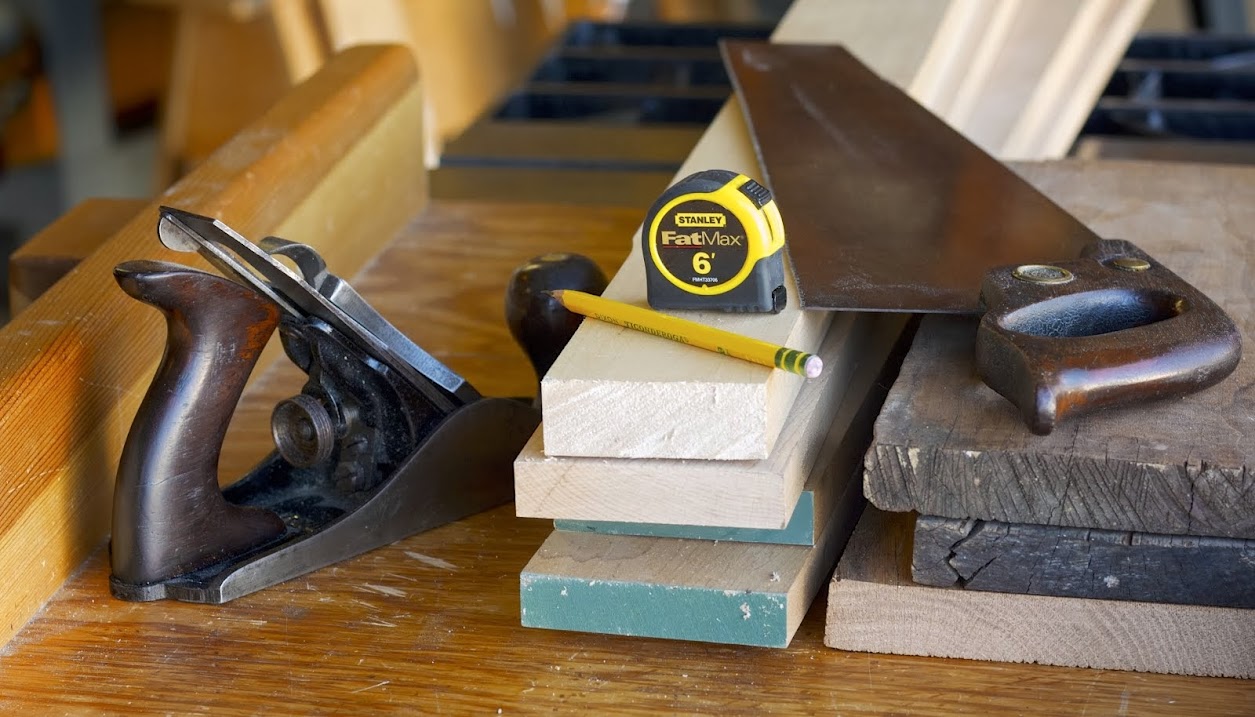Click Photos to Enlarge
I built this box as a gift for a good friend of mine who recently retired from teaching. Mike was a vocational education teacher and we taught next door to each other for 30 years.
I chose to make to make the sides and ends out of cherry and the top and bottom out of maple. The two woods make a nice contrast. People often ask me how I determine the size of the boxes I build. There is really is no magic formula... I choose the size by lumber left over from previous projects.
 |
| Materials and Plans for the Box |
I needed to resaw and edge glue maple for the top and bottom. Resawing is cutting a thick board to create two thinner pieces. I like to use the band saw set up with a guide that provides added control when resawing. The top and bottom parts were glued and clamped edge to edge to increase the width.
 |
| Resawing with the Band Saw |
 |
| Top and Bottom Parts Glued and Clamped |
Next, all the parts were surface planed, ripped to width, and crosscut to length. I chose to use box joinery to assemble the sides and ends. Interlocking the parts and the additional glue surface makes the joint very strong. In addition, I'm partial to exposing and celebrating the joinery. A previous post shows how the box joints were made using a special jig setup on the table saw. Once the parts were dry assembled to check the fit, the box was glued and clamped.
 |
| Box Joint Sample |
Often lessons are learned the hard way... There is always a small amount of glue that squeezes out after clamping. On the outside corners it isn't a problem to scrape and clean the dried glue. Inside corners are are more challenging. I tried wiping the wet glue with a damp cloth and it smears. Trying to scrape the dried glue is difficult too. Now I place two pieces of masking tape adjacent to each other in the corner and the glue will squeeze on to the tape. When the tape is lifted off, the glue comes with it. Works great.
 |
| Glued Box Joints with Tape in the Corners to Collect Glue |
Next, the maple top and bottom were glued and clamped to the side and end assembly. The maple top and bottom were cut slightly oversized so they could be trimmed flush to the sides with the router. The top is then cut from the box body on the table saw. Four cuts are made around the box to separate the top from the body. A short cove was cut on the front top edge of the box to help when opening the top. The top was then delivered to the Clovis Woodshed for computer laser etching the text.
I chose Brusso butt hinges for the box. I learned about these from my good friend and fellow woodworker, Jay. These hinges are heavy duty and l like the way they hold lid when open. The quality of the hinges makes the expense worth it. Hinge mortises were cut and a slight bevel was cut on back of both the top and box. This a little trick Jay shared with me. It allows the hinge spine to fit flush with the back side of the box for a more finished look.
 |
| Marking the Location for the Brusso Butt Hinges |
 |
| Cutting the Hinge Mortise |
The gift was well received by Mike. It was a pleasure to build and share the keepsake box.


